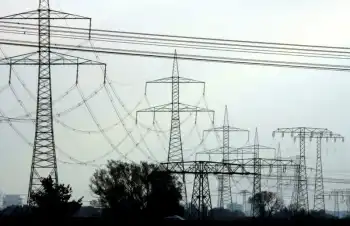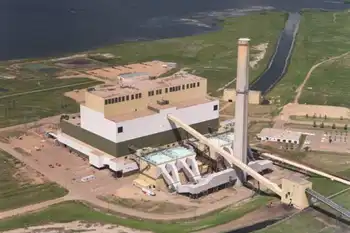The Power Hungry Get Powered Down
Los Angeles -- -
Los Angeles -- Back in the 1930s, the federal government lured the energy-hungry aluminum industry to the Pacific Northwest with the promise of cheap hydroelectric power. For decades, the smelters provided good jobs while churning out the lightweight metal crucial for defense. Now, however, the government's priorities have shifted. The West's need for power, it has concluded, outweighs the need for the kilowatt-gobbling plants. By year's end, citizens of the region most likely will be paying the aluminum industry to keep its doors closed.
Aluminum belongs to a venerable club of industries roiled by today's energy realities. As the nation's biggest energy users, manufacturers of metals, chemicals, and paper are facing plant shutdowns and shrinking profits. And the squeeze is tightening as government and utilities struggle to meet increased power demand. "Those that have used the highest amounts of energy, and have gotten relatively cheap prices for electricity those are the industries that are really in danger," says energy economist Philip Verleger.
Energy windfall. Until now, the firms that operate the 10 aluminum smelters in Washington, Montana, and Oregon benefited from the energy shortage. Locked into long-term contracts at $22 per megawatt-hour (while the going rate shot up to $300), many closed their mills and resold their electricity–realizing hefty profits even after paying idled workers. Kaiser Aluminum made $100 million on energy sales in the last quarter of 2000, more than offsetting the $90 million it lost on other operations. But those favorable contracts expire in October, and on April 9, the Bonneville Power Administration, the federal agency that supplies half the region's energy, said it does not want to renew them. In fact, in light of its drought-stricken hydroelectric generators and soaring West Coast energy prices, it wants the smelters to shut down for as long as two years. At full power, the smelters use 3,000 megawatts of electricity, enough to power nearly all the 3.2 million homes in Washington and Oregon. And while Pacific Northwest mills still churn out 40 percent of U.S.-made aluminum, they contribute only 5 percent of global output. The industry leader, Alcoa, operates in 37 countries, many with energy costs below even Bonneville's bargain rates. The industry also contributes relatively little to the local economy. If all smelters closed, the region would lose 6,000 jobs but less than a half percent of its total employment or output, according to one study. BPA says power savings will cut prices enough to cover compensation payments to the firms.
Aluminum could be the first example of what economist Verleger predicts will be a "triage" of the industrial economy. To relieve pressure on the energy system, government will be forced to intervene, he says, to "identify the moribund bricks-and-mortar industries and activities that consume large amounts of energy but yield little value to the economy." If government doesn't do it, the market will, Verleger says.
Costly commodity. Indeed, high fuel costs have been cited repeatedly as a factor in a string of bankruptcies in the energy-hungry steel industry since November. The paper industry, which employs 660,000 people, also blames energy costs for plummeting earnings, such as International Paper's 90 percent falloff and Georgia-Pacific's $137 million loss reported last week. The chemical industry, with more than 1 million workers, is the nation's largest industrial electricity user and relies on natural gas as a raw material for everything from plastic to paint. For years, cheap gas gave U.S. manufacturers a leg up on foreign competitors that use a different feedstock, oil-based naphtha. But the tables turned when natural gas prices rose fivefold. At the start of this year, the U.S. chemical industry, the nation's No. 1 exporter with a $1.2 billion trade surplus last year, dipped into a $400 million deficit before reviving a bit in February. "We are the canary in the coal mine," says Fred Webber, president of the American Chemistry Council. "If this is happening to us, it is ominous for the economy."
Energy-intensive industries are coping through lobbying and retooling. The chemical industry has been among those pressing the energy task force chaired by Vice President Dick Cheney to focus on new coal and nuclear power generation. The aluminum industry is weighing how to respond to BPA's call for a shutdown, but some firms are already planning for a radically altered future by building their own power plants and switching from basic aluminum to higher-tech, higher-priced products."There are going to be two kinds out there–the quick and the dead," says Ed Mosey, BPA spokesman. "The dead will be the ones that didn't move quickly to find some other way to make this work."
Related News

Power Outages to Mitigate Wildfire Risks
COLORADO - Colorado, known for its stunning landscapes and outdoor recreation, has implemented proactive measures to reduce the risk of wildfires by strategically shutting off power in high-risk areas. This approach, while disruptive, aims to safeguard communities, protect natural resources, and mitigate the devastating impacts of wildfires that have become increasingly prevalent in the region.
The decision to initiate power outages as a preventative measure against wildfires underscores Colorado's commitment to proactive fire management and public safety. With climate change contributing to hotter and drier conditions, the state faces heightened wildfire risks, necessitating innovative strategies to minimize ignition sources and…




